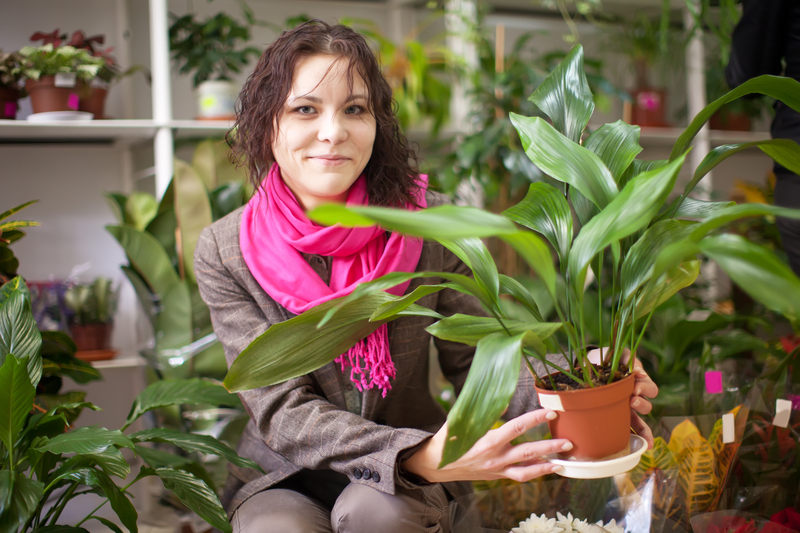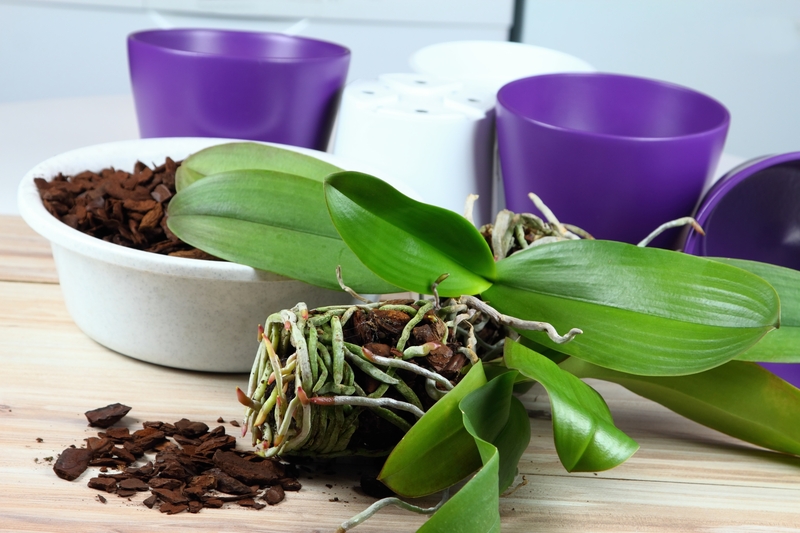Building a Green Adventure Land Right in Your Backyard
Posted on 20/08/2025
Building a Green Adventure Land Right in Your Backyard
Are you ready to turn your backyard into a lush, eco-conscious oasis of excitement and exploration for your family? Building a green adventure land right in your backyard is more than just a trend--it is a fantastic way to promote environmental stewardship, stimulate creativity, encourage physical activity, and establish a lasting connection with nature. Read on to discover everything you need to create your own sustainable, fun-packed backyard adventure park.

Why Choose a Green Adventure Land?
Green adventure lands combine the magic of play and the importance of sustainability. By designing an eco-friendly amusement space, you not only provide endless entertainment for loved ones but also contribute positively to the environment.
- Encourages Outdoor Play: Inspires children and adults to spend time outdoors, enhancing physical and mental well-being.
- Teaches Environmental Responsibility: Instills values of conservation, respect for nature, and environmental awareness in the next generation.
- Increases Biodiversity: Makes your yard a haven for pollinators, birds, and native plants.
- Boosts Property Aesthetics and Value: Improves the look and value of your property with natural landscaping and thoughtful design.
- Promotes Family Bonding: Provides endless opportunities for shared adventure, teamwork, and learning experiences.
Understanding the Principles of Eco-Friendly Backyard Design
Before you dive in, it's essential to embrace key principles when brainstorming how to create a green adventure land in your backyard. Focus on sustainability, safety, and adaptability for long-term enjoyment.
- Use Natural Materials: Whenever possible, opt for wood, bamboo, rock, and natural fibers rather than plastic or synthetic alternatives.
- Maximize Plant Diversity: Native trees, shrubs, flowers, and grasses support local wildlife and create a vibrant, resilient landscape.
- Minimize Waste: Incorporate recycled and upcycled materials in your structures and landscaping features.
- Water Conservation: Utilize rain barrels, drip irrigation, and drought-resistant plant species to reduce water usage.
- Consider Wildlife: Design habitats and provide shelters, feeders, and water sources for birds, butterflies, bees, and beneficial insects.
Planning Your Backyard Green Adventure Land
1. Assess Your Backyard Space
Start with a thoughtful analysis of your outdoor area. Measure your yard, sketch a basic layout, and observe sunlight patterns, slopes, and natural features. Highlight existing trees, shaded spots, sunny patches, and possible hazards. Consider how you and your family wish to use the space, such as for active play, quiet retreat, learning, or all three.
2. Involve the Whole Family
Building a sustainable adventure park in your garden is more fun and meaningful when everyone has input. Let each family member share their ideas--whether they dream of a butterfly garden, a zipline, an outdoor reading nook, or a homemade obstacle course. This collaboration ensures that the finished project serves everyone's interests.
3. Set a Budget and Phased Plan
Designing a backyard green adventure land doesn't have to happen all at once. Prioritize your wish list and break the project into manageable phases, such as landscaping first, play structures next, and aesthetic touches last. Allocate a realistic budget to avoid overspending and shop for secondhand, reclaimed, or donated building materials for extra savings.
Exciting Features to Include in Your Green Adventure Land
There are countless creative ways to turn a backyard into an eco-friendly adventure zone. Here are some inspiring ideas and essential elements to consider:
Natural Playground Elements
- Treehouses & Platforms: Build enchanting hideaways using FSC-certified or reclaimed wood. Integrate ladders, ropes, and natural camouflaging through vines or native shrubs.
- Climbing Walls & Boulders: Arrange large rocks or custom wood structures for scaling--perfect for physical exercise and imagination.
- Logs & Balance Beams: Set up log rounds or wooden beams as stepping stones and balancing practice--nature's own ninja course!
- Sand & Mud Play Zones: Recycled wood-framed sandboxes, mud kitchens, and digging pits spark hours of sensory play and exploration.
Eco-Friendly Play Structures
- Living Willow Structures: Intertwined willow rods shape magical domes, tunnels, or forts--living sculptures that grow greener every year.
- Solar-Powered Water Features: Small pondless waterfalls or bubbling rocks powered by solar pumps attract wildlife and offer calming ambiance without wasting energy.
- Recycled Tire Swings: Upcycle old tires into swings, climbing features, or even planters.
- Bamboo Tunnels & Mazes: Fast-growing, renewable bamboo is perfect for crafting winding tunnels and mini-labyrinths.
Wildlife and Pollinator Gardens
- Butterfly Habitats: Plant milkweed, coneflowers, and native nectar-rich blooms to attract monarchs and other butterflies.
- Bird Feeders & Birdhouses: Install nesting boxes and feeders made from natural or reclaimed materials.
- Pond or Mini Wetland: Even small water features with stones allow frogs, dragonflies, and birds to visit.
- Bee Hotels: Provide hollow-stemmed bundles for solitary bees to nest--an essential part of a healthy ecosystem.
Sustainable Gardening & Food Production
- Vegetable & Herb Gardens: Choose raised beds made from untreated wood, straw bales, or recycled bricks. Engage kids in planting and harvesting--for fun and fresh meals!
- Fruit Trees & Berry Bushes: Dwarf fruit trees, grapes, or berry canes double as play spaces and edible landscapes.
- Composting Stations: Teach the value of recycling food and yard waste. Compost bins can also foster experiments and observations.
- Vertical Gardens: Maximize space with wall-mounted planters, hanging gardens, or trellises clothed in beans, peas, or climbing flowers.
Learning and Gathering Spaces
- Outdoor Classroom: Arrange log stumps and benches for lessons, crafts, or nature talks.
- Storytelling Circle & Fire Pit: A stone-ringed fire pit invites family singalongs, roasting marshmallows, and sharing stories under the stars (ensure local safety regulations are followed).
- Stargazing Zones: Clear a flat, open area for setting up telescopes or laying out blankets at night.
- Art & Creativity Corners: Picnic tables or recycled pallet workbenches make perfect spots for painting, building, and nature-inspired crafts.
Tips for Making Your Backyard Adventure Land Eco-Friendly
Choose Resources Wisely
Opt for renewable, sustainable, and non-toxic materials. Avoid pressure-treated wood, which can leach chemicals. Use natural paints, stains, and sealers, or leave materials unfinished to weather gracefully.
Reuse, Repurpose, Recycle
Transform pallets, barrels, old buckets, and other discarded items into new features. Upcycling not only saves money but inspires innovation!
Water Conservation Strategies
- Rainwater Harvesting: Install rain barrels to provide water for plants and wildlife areas.
- Mulching: Keep soil moist and reduce weeds using organic mulch from wood chips, leaves, or grass clippings.
- Smart Irrigation: Use drip irrigation lines and water plants early in the morning or late evening to cut evaporation losses.
Plant Native and Adapted Species
Native plants thrive in your regional climate and soil, require less water and maintenance, and support local flora and fauna. Mix in drought-tolerant adapted species for additional savings and resilience.
Avoid Chemical Pesticides and Fertilizers
Go organic. Encourage beneficial insects (like ladybugs and lacewings), hand pick pests, and use compost, manure, or natural amendments for soil fertility. Healthy, organic gardens are the heartbeat of a green adventure land.
Designing Adventure and Learning for All Ages
The best green backyard adventure parks bring together play, discovery, and relaxation for everyone. Here's how to match features with family interests and ages:
- For Toddlers: Sensory paths (pebble, sand, logs), water play basins, fairy gardens, and simple balance beams.
- For Kids: Tree swings, climbing areas, exploration trails, bug hotels, and edible gardens.
- For Teens: Hammocks, fire pits, outdoor movie screens, slacklines, and sports areas with environmental themes.
- For Adults: Yoga decks, native wildflower gardens, seating nooks with solar lighting, and culinary herb beds.
- For Seniors and Guests: Accessible paths, raised garden beds, shade canopies, and peaceful wildlife observation points.
Maintenance and Growth: Keeping the Adventure Alive
A sustainable adventure land in your backyard evolves with your family. Involve children in gardening, repairing, and upgrading features to grow new skills and stewardship. Rotate play and garden areas, try new plantings year by year, and modify structures for safety and fun as kids age.
- Regular Inspections: Check for loose boards, nails, splinters, or unstable logs and rocks.
- Seasonal Plant Care: Prune, fertilize, and protect plants according to the seasons.
- Wildlife Care: Clean birdbaths, refill feeders, and update habitats as needed.
- Compost Checks: Turn piles, add new materials, and use finished compost in gardens.
- Evolving Features: Add new learning corners, swap out toys and tools, and refresh art spaces to match children's growing interests.
Eco-Friendly Backyard Safety Tips
Prioritize safety as you design and maintain your adventure park:
- Non-Slip Paths: Use mulch, gravel, or textured pavers instead of slick surfaces.
- Secure Structures: Ensure platforms, swings, and balance beams are solidly anchored.
- Supervision: Especially with water features or elevated platforms, establish clear boundaries and supervise young children.
- Pest and Plant Awareness: Teach kids which plants are edible or harmful, and note any stinging insects or critters visitors may encounter.
- Fire Safety: When using fire pits, keep water and a shovel nearby; thoroughly teach fire rules and monitor use.

Year-Round Green Adventure: Ideas for Every Season
Don't let your green adventure land fade with the seasons! Here's how to keep the fun going all year:
- Spring: Organize treasure hunts, plant new seeds, build birdhouses, and create rain gardens.
- Summer: Host backyard camping, stargazing nights, homemade nature crafts, or water play tournaments.
- Autumn: Collect leaves, carve gourds, build scarecrows, and plant bulbs for next year.
- Winter: Try tracking animal footprints, making ice ornaments, setting up bird feeders, or designing a snow labyrinth.
Conclusion: Adventure, Sustainability, and Family Memories
Building a green adventure park in your backyard isn't just about play--it's about creating a sustainable, inviting, and educational environment everyone can cherish. With careful planning, sustainable materials, and a spirit of discovery, your outdoor space can become a vibrant, living adventure land that grows right alongside your family.
Now is the perfect moment to start. Whether you transform a corner of your yard or give the whole space a green makeover, you'll sow memories, happiness, and a greener future--right outside your back door.

